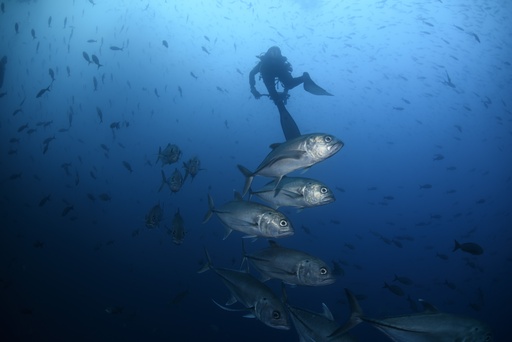In the Galápagos Islands, the collapse of Darwin’s Arch in 2021 highlighted the vulnerability of this remote archipelago to natural erosion, invasive species, and climate change. The warm waters surrounding the islands impact the food sources of diverse species like marine iguanas and sea turtles, leading to challenges in finding food and nesting grounds due to rising ocean temperatures. These environmental changes pose a threat to the unique biodiversity of the Galápagos.
Natasha Cabezas, a naturalist guide, emphasized that while the Galápagos boast a wide variety of species, their populations are limited. The convergence of major ocean currents in the region, along with phenomena like El Niño, exacerbates the impact of human-caused climate change on the marine ecosystem. The warming of the oceans has been a concerning trend, affecting the abundance of marine life in the area.
As winter approaches in the Southern Hemisphere, the Cromwell current brings a host of marine species to the surface, including whale sharks, hammerheads, and sunfish. However, El Niño events can disrupt food availability for marine iguanas and sea turtles, leading to population declines. Scientists are closely monitoring the effects of these climate events on the marine life of the Galápagos.
In addition to climate-related challenges, feral animals such as cats, dogs, pigs, goats, and cattle pose a threat to the native species of the islands. Abandoned pets have become a problem following the COVID-19 pandemic, further exacerbating the issue. Invasive species like feral pigs and cats compete with native wildlife for resources, with devastating consequences for endangered species like the giant tortoises.
Apart from invasive species and warming oceans, plastic pollution is a growing concern in the Galápagos. Microplastics have been found in the bellies of Galápagos penguins, underscoring the pervasive nature of plastic pollution in the marine environment. Jorge Carrión, Director of the Galapagos Conservancy, highlighted the urgent need to address these multiple threats to preserve the unique biodiversity of the Galápagos Islands.


